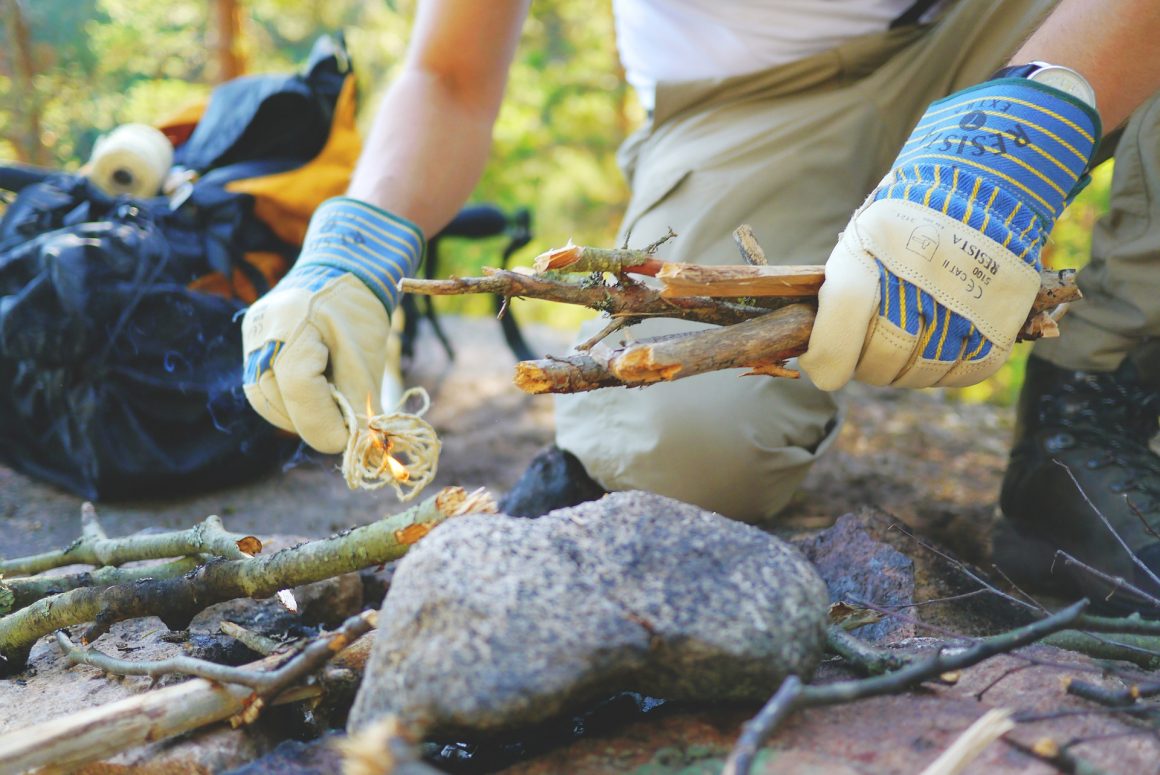
Learn how to care for a fire ahead of Calgary’s winter months
By Calum Robertson, October 5 2018 —
The snow has arrived and the nights are freezing. Luckily, city living provides many options for warmth. But what if you want to do some winter camping or enjoy some perfectly roasted backyard marshmallows?
Many city parks have firepits for public use. Some houses have backyard pits and many older homes have fireplaces. Knowing how to safely light, care for and put out a fire is useful in these colder months, whether or not you’ll be camping.
Building a fire is easy, requiring dry wood and kindling. Paper and cardboard will do the trick. Set up a small pile of shredded paper and twigs in the middle of your firepit to catch the spark from your match or lighter. Once you’ve lit the kindling, gently add twigs and other small bits of wood, gradually increasing in size. You don’t want to smother the flame, which needs oxygen as well as fuel, so make sure there’s airflow.
When you’ve built up your blaze, grab two logs from your woodpile and place one on either side. Take two more and construct a hashtag, balancing these new logs on the previous ones. Make sure the flames touch the wood so it will catch the spark. Remember to not completely cover the fire. Once your fire is burning nicely, add more wood, copying the hashtag style at first. Don’t worry if it takes a couple of tries. Sometimes, the flame takes a little coaxing to really ignite the wood.
Try to avoid using fresh-cut wood as it will emit more smoke than flame. Older wood burns much better and emits less smoke. Keep in mind that the bigger you build your fire, the hotter it will be and the faster the wood will burn. Ration your supply and be mindful of how much you’re burning.
There are several options to light the actual fire. Lighters are easy to use and equally easy to purchase at most convenience stores. However, when lighting your nest of kindling, it can be difficult to get the lighter’s flame at the right angle for the kindling to catch. Light at the base of the kindling so the fire burns upward and lights the rest. This can require some tricky manoeuvring of the lighter but be careful not to burn your fingertips. A match, on the other hand, can be struck and then placed within the kindling. Patience and plenty of matches are key in case it takes a couple of tries.
For the dedicated, there is a third option. Flint and steel is an older method, trickier than lighters or matches but much more dependable. Lighters may run out of fluid and matches can get wet, but flint and steel can withstand both of these obstacles. A kit of flint and steel can be purchased from any outdoor store. To use it, place the flint bar upon your pile of kindling and use the steel to scrape along it. Scrape quickly and with some force, to create a spark. Flicking the steel away from you at the end of a scrape can aid in generating sparks. This spark will hopefully land on your kindling and ignite it, allowing you to begin to feed the flame and build up your blaze.
After building the fire comes the job of maintenance. Have water on stand-by to put out the fire when you leave the site or if the fire begins to get out of hand. Even if the fire is just coals, you should still douse it with water if you need to leave it unattended. Wind can stir up the coals and reignite the fire.
Do not leave your fire unattended as accidents can happen and the consequences can be devastating. Be mindful of where your fire is, how large the blaze is and how long you plan on staying. Though fire-building can be tricky, perseverance will make it second nature. Stay warm this winter and roast some chestnuts or marshmallows while you’re at it!
